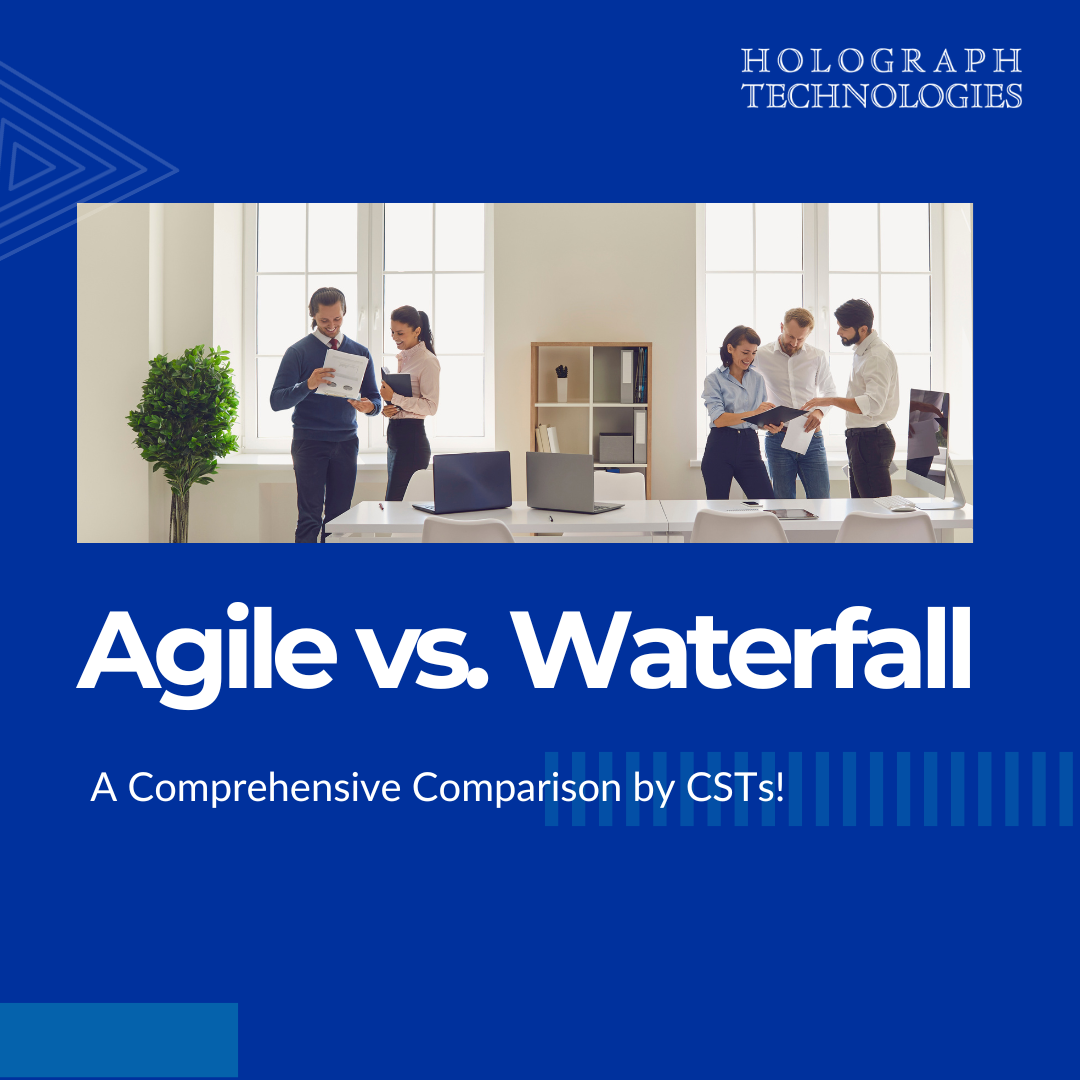In the ever-evolving realm of project management methodologies, two giants, Agile and Waterfall, have held their ground. To discern the distinctions and decide which one suits your project, let’s dive into the expertise of Certified Scrum Trainers (CSTs).
1. The Foundation:
– Agile: Agile is a flexible, iterative approach that values collaboration, adaptability, and customer feedback. It breaks projects into small increments.
– Waterfall: Waterfall follows a linear, sequential process where each phase must be completed before the next one begins.
2. Project Flexibility:
– Agile: Agile is highly flexible and welcomes changes even late in the project, making it ideal for projects with evolving requirements.
– Waterfall: Waterfall is rigid; changes late in the process are costly and often discouraged.
3. Customer Engagement:
– Agile: Agile promotes continuous customer involvement, ensuring the final product aligns with their needs.
– Waterfall: Waterfall involves customers mainly at the beginning and end of the project.
4. Risk Management:
– Agile: Agile allows for frequent risk assessment and mitigation throughout the project.
– Waterfall: Waterfall conducts risk assessment at the beginning and hopes that things go as planned.
5. Project Phases:
– Agile: Agile divides projects into small, manageable phases called iterations or sprints.
– Waterfall: Waterfall has distinct phases: requirements, design, implementation, testing, deployment, and maintenance.
6. Documentation:
– Agile: Agile prioritizes working software over comprehensive documentation, although some documentation is still important.
– Waterfall: Waterfall mandates extensive documentation at every phase.
7. Progress Measurement:
– Agile: Agile measures progress through working, potentially shippable increments.
– Waterfall: Waterfall assesses progress via completed phases and milestones.
8. Handling Changes:
– Agile: Agile embraces change and adapts easily to evolving project requirements.
– Waterfall: Waterfall resists changes once the project has begun.
9. Delivery Time:
– Agile: Agile aims for rapid, incremental delivery of valuable functionality.
– Waterfall: Waterfall delivers the entire product at the end of the project.
10. Quality Assurance:
– Agile: Agile integrates testing and quality assurance throughout development.
– Waterfall: Waterfall conducts testing after the development phase.
11. Certified Scrum Trainers’ Take:
– CSTs advocate Agile’s flexibility and customer-centricity for projects with evolving requirements.
– For highly regulated industries like healthcare, where detailed documentation is crucial, Waterfall may be preferred.
Choosing between Agile and Waterfall depends on your project’s nature, requirements, and constraints. CSTs emphasize that a hybrid approach, often termed “Wagile,” combining the best of both worlds, can be a viable solution for many organizations.
Ready to explore the ideal methodology for your project? Connect with us for personalized guidance on Agile, Waterfall, or a hybrid approach.




